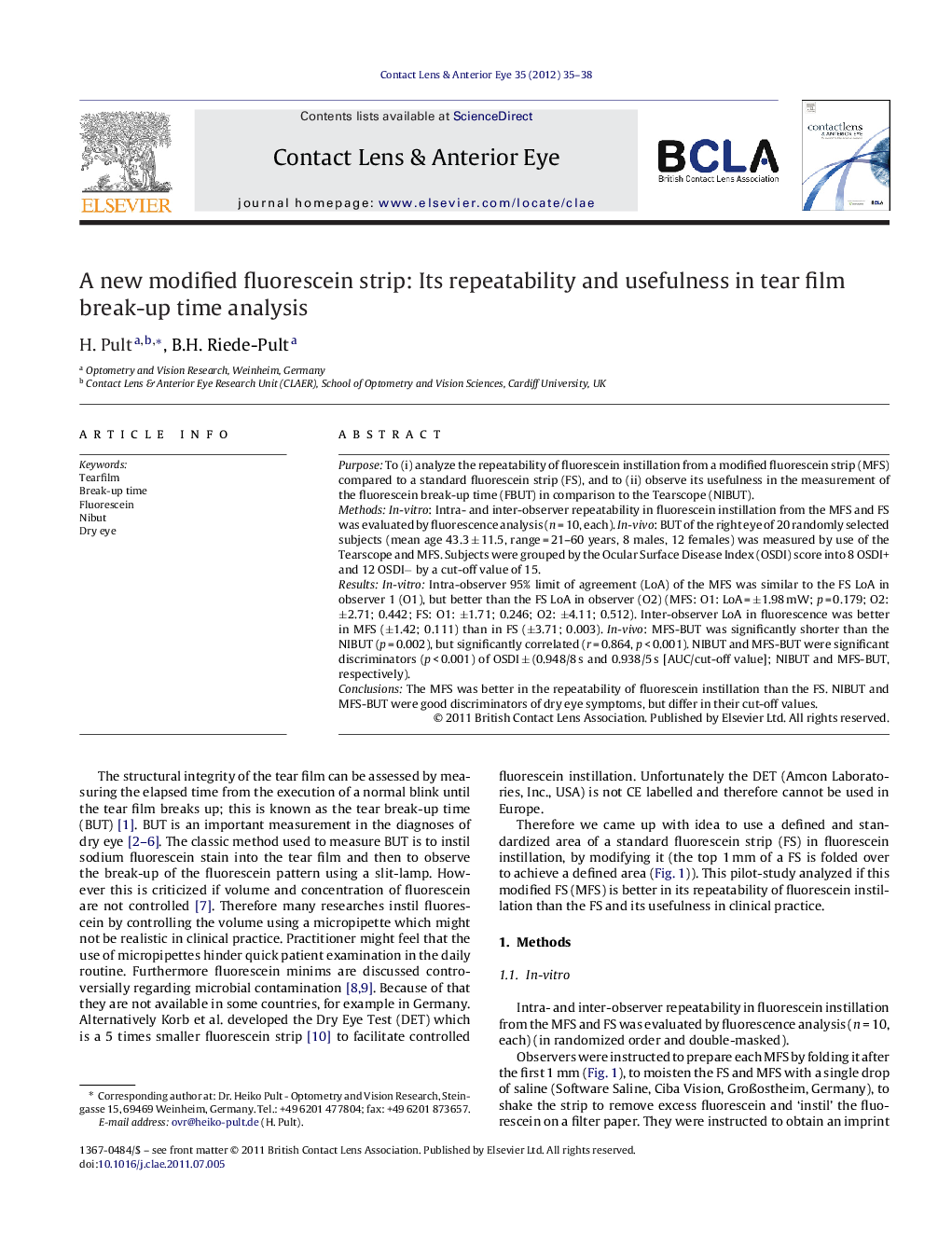| Article ID | Journal | Published Year | Pages | File Type |
|---|---|---|---|---|
| 2696295 | Contact Lens and Anterior Eye | 2012 | 4 Pages |
PurposeTo (i) analyze the repeatability of fluorescein instillation from a modified fluorescein strip (MFS) compared to a standard fluorescein strip (FS), and to (ii) observe its usefulness in the measurement of the fluorescein break-up time (FBUT) in comparison to the Tearscope (NIBUT).MethodsIn-vitro: Intra- and inter-observer repeatability in fluorescein instillation from the MFS and FS was evaluated by fluorescence analysis (n = 10, each). In-vivo: BUT of the right eye of 20 randomly selected subjects (mean age 43.3 ± 11.5, range = 21–60 years, 8 males, 12 females) was measured by use of the Tearscope and MFS. Subjects were grouped by the Ocular Surface Disease Index (OSDI) score into 8 OSDI+ and 12 OSDI− by a cut-off value of 15.ResultsIn-vitro: Intra-observer 95% limit of agreement (LoA) of the MFS was similar to the FS LoA in observer 1 (O1), but better than the FS LoA in observer (O2) (MFS: O1: LoA = ±1.98 mW; p = 0.179; O2: ±2.71; 0.442; FS: O1: ±1.71; 0.246; O2: ±4.11; 0.512). Inter-observer LoA in fluorescence was better in MFS (±1.42; 0.111) than in FS (±3.71; 0.003). In-vivo: MFS-BUT was significantly shorter than the NIBUT (p = 0.002), but significantly correlated (r = 0.864, p < 0.001). NIBUT and MFS-BUT were significant discriminators (p < 0.001) of OSDI ± (0.948/8 s and 0.938/5 s [AUC/cut-off value]; NIBUT and MFS-BUT, respectively).ConclusionsThe MFS was better in the repeatability of fluorescein instillation than the FS. NIBUT and MFS-BUT were good discriminators of dry eye symptoms, but differ in their cut-off values.
